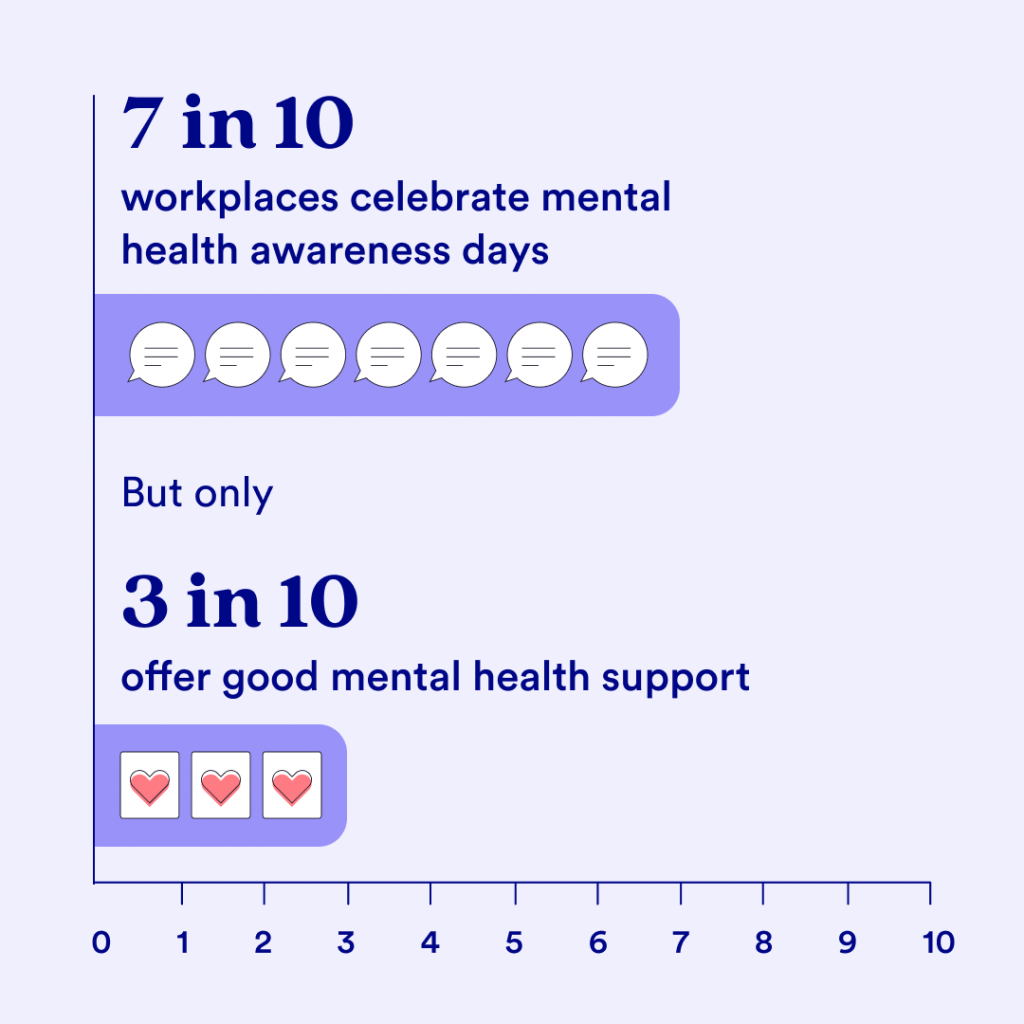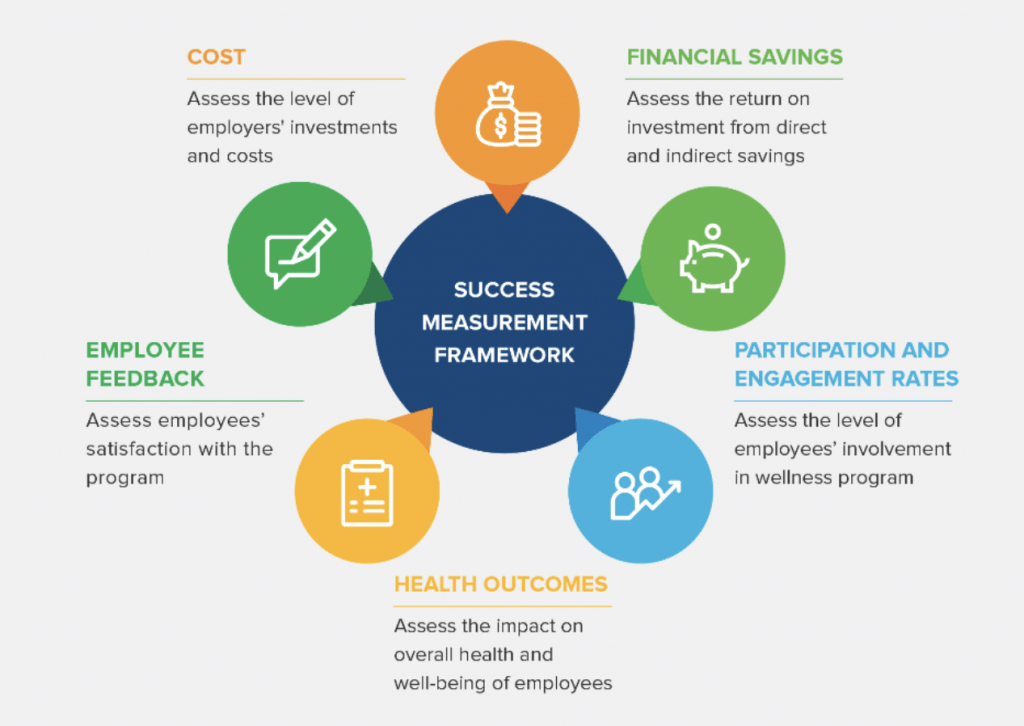A new survey reveals that 35% of Gen Z employees feel their employers are doing the bare minimum to support their mental health. While most companies promote mental health awareness, many take a “check-the-box” approach to wellness without providing meaningful assistance. This act of prioritizing the appearance of caring for employees over actually providing tangible support is becoming more commonly known as “well-being washing.”
In other words, an increasing number of companies are being called out for merely portraying an image of care rather than taking concrete steps to support their employees’ well-being. This article provides insight into well-being washing, practical ways to demonstrate genuine care for employees’ well-being, and the importance of implementing an effective wellness strategy.

Pressed for time? Here’s a quick summary…
- A significant gap exists between employer perception and employee satisfaction regarding mental health and overall well-being.
- Employers must go beyond raising awareness for mental health and demonstrate authentic support for employees.
- An effective well-being strategy benefits both employees and employers by building a more engaged, productive, and satisfied workforce.
What Is Well-Being Washing?
Well-being washing is particularly acute with mental health. It occurs when a company promotes mental health awareness on social media, blog posts, and events without providing genuine support. A discrepancy exists between employers’ words and actions, with 70% of workplaces celebrating mental health awareness days but only 30% offering mental health support that is considered good or outstanding by employees.

This gap extends to employer perception and employee satisfaction, as employers rate mental health and well-being of their employees 22% more favorably than the employees themselves. This variation between the two groups highlights a concerning disconnect and suggests that employers do not fully understand the challenges their employees face.
“Among well-being offerings, the most desirable for Gen Z employees are duvet days, or unplanned paid days off (28%), helpline access (24%), guidance from a counselor (18%), and support from a mental health first-aider (17%).”
How Employers Can Demonstrate Authentic Care For Employees’ Well-Being
Employees are no longer looking for just job security; they are also seeking organizations that support their mental health. The initiative doesn’t end at raising awareness—employers must walk the walk.
1. Ask For Employee Input
Asking, not guessing, is crucial to aligning employer offerings with employee needs. Simply assuming what employees want can result in wasted time, money, and resources on perks that lack any significant, long-term impact. Building a well-being strategy based on key issues identified from analyzing employee feedback is the best way to develop a sustainable and effective approach.

2. Ditch Band-Aid Approaches
While stand-up desks and meditation workshops can be helpful, workplaces often focus on treating stress symptoms rather than reducing the stressors themselves. Benefits that may indirectly reduce stress include family-friendly benefits to alleviate the responsibilities of working parents and flexible work arrangements to promote a work-life balance.
3. Involve Leadership
Leadership must lead by example to reinforce a culture that prioritizes well-being. Employees are more likely to feel comfortable utilizing related benefits and taking care of their mental health if leadership does the same. This can be achieved by modeling healthy behavior, such as taking advantage of paid time off (PTO) and scheduling regular mental breaks throughout the day, which can be marked as private time on their calendars.
4. Tailor Wellness Program
Workplace wellness is not accomplished through a one-size-fits-all approach. It is crucial to acknowledge employees as individuals with unique wants and needs. The optimal solution is to implement a holistic wellness program that can be tailored to each employee and addresses all dimensions of well-being. By doing so, every employee can receive personalized assistance that caters to their specific needs.

5. Measure Impact
Measuring progress in workplace well-being is just as important as any other business performance metric. Without these crucial insights, employers would rely on guesswork to make their benefits decisions. Sixty-seven percent of human resources leaders said measuring employee well-being is a priority for their company in 2023. Consider cost, financial savings, participation and engagement rates, health outcomes, and employee feedback when assessing the success of a wellness program.

The Importance Of Implementing An Effective Well-Being Strategy
Well-being initiatives have become non-negotiable for employees. Gen Z is twice as likely to feel stressed than other generations, and nearly two-thirds of human resources decision-makers claim employee expectations for wellness support have increased.
Among well-being offerings, the most desirable for Gen Z employees are duvet days, or unplanned paid days off (28%), helpline access (24%), guidance from a counselor (18%), and support from a mental health first-aider (17%). Given economic uncertainty and rising cost of living, financial coaching (12%) is also popular. Many workers lack emergency savings and experience money-related stress, yet less than a quarter of employees report financial support within their organization.

Investing in a culture of health provides mutual benefits for organizations and employees. Unwell employees cost US employers $530 billion in productivity each year, translating to decreased innovation, creativity, and employee engagement.
Employers who prioritize authentic care for the well-being of their workforce gain more productive, engaged, and higher-performing employees who experience greater job satisfaction and lower rates of absenteeism. In today’s fast-paced and competitive work environment, prioritizing the well-being of employees is not just the right thing to do. It is also a smart business decision that can yield significant benefits for employers and employees alike.












